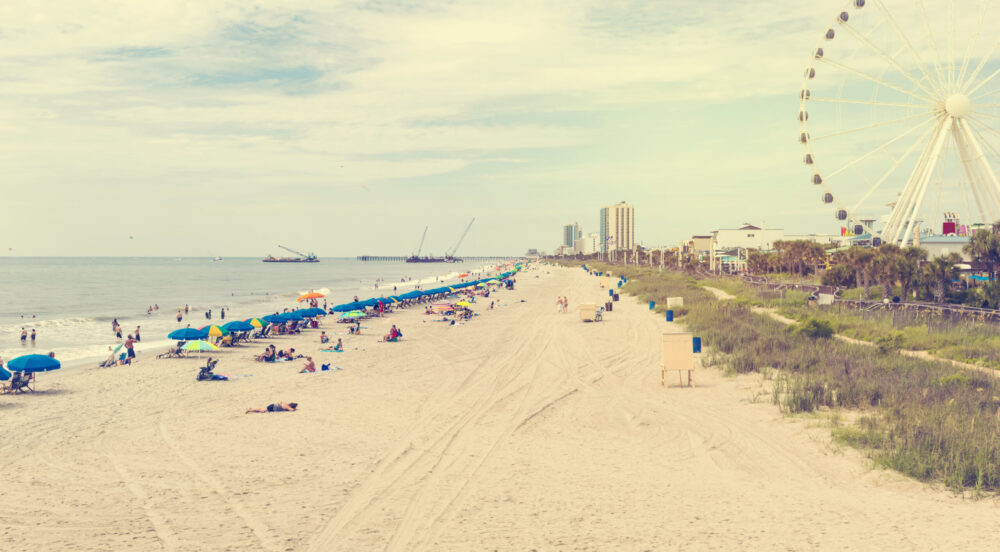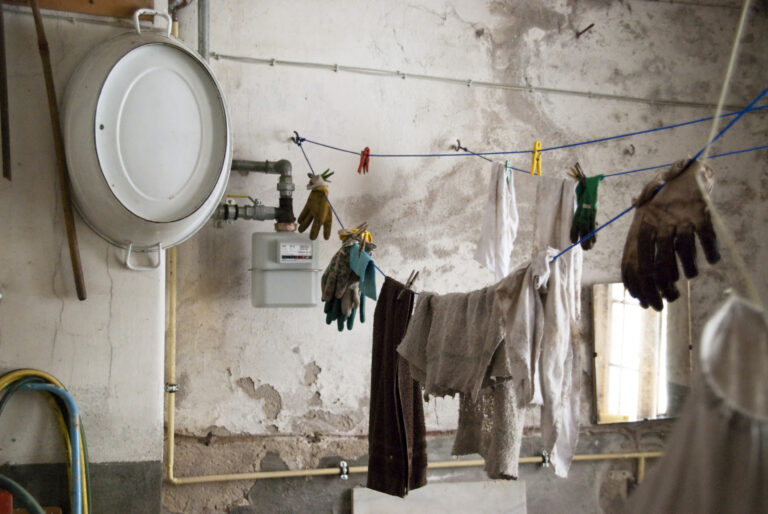An extreme weather event is defined by the National Oceanic and Atmospheric Administration (NOAA) as “a time and place in which weather, climate, or environmental conditions—such as temperature, precipitation, drought, or flooding—rank above a threshold value near the upper or lower ends of the range of historical measurements.” This threshold is subjective, but some scientists define it as the highest or lowest 5% or 10% of historical measurements.
For the World Meteorological Organization (WMO), extreme weather are rare events that happen at a particular place and time of year. They also have unusual characteristics (magnitude, location, timing, or extent), but these may vary from place to place.
In the U.S., these extreme weather events come in the form of blizzards, thunderstorms, tornadoes, hurricanes, and more. In New Jersey, extreme weather includes extreme temperatures, high winds, hailstorms, tornadoes and thunderstorms.
Speaking of extreme weather changes, since I am from Michigan, I am certain I could adjust to what claims New Jersey weather patterns with no problems.
Extreme Temperatures
Extreme temperatures refer to both heat and cold events. With New Jersey having four seasons, this covers temperatures that are outside of the normal range for the season.
| Month | 30-Year Normal | Minimum Temperature | Maximum Temperature |
| January | 30.7°F (-0.72°C) | 18.7°F (-7.39°C) | 41°F (5°C) |
| February | 33.4°F (-0.78°C) | 17.2°F (-8.22°C) | 40.4°F (4.67°C) |
| March | 40.8°F (4.89°C) | 30.4°F (-0.89°C) | 49.8°F (9.89°C) |
| April | 50.9°F (10.50°C) | 43.8°F (6.56°C) | 55.9°F (13.28°C) |
| May | 60.5°F (15.83°C) | 53.1°F (11.72°C) | 66°F (18.89°C) |
| June | 69.8°F (21°C) | 63.1°F (17.28°C) | 73.9°F (23.28°C) |
| July | 74.6°F (23.67°C) | 69.4°F (20.78°C) | 78.4°F (25.78°C) |
| August | 73°F (22.78°C) | 66.2°F (19°C) | 76.9°F (24.94°C) |
| September | 65.8°F (18.78°C) | 60.2°F (15.67°C) | 70.8°F (21.56°C) |
| October | 54.5°F (12.50°C) | 47.7°F (8.72°C) | 62.1°F (16.72°C) |
| November | 45.2°F (7.33°C) | 36.6°F (2.56°C) | 49.6°F (9.78°C) |
| December | 35.2°F (1.78°C) | 22.7°F (-5.17°C) | 48°F (8.89°C) |
*Source: ONJSC Rutgers University, 2017 (via NJ.gov)
Extreme Heat
Extreme heat in New Jersey means days with temperatures equal to or more than 90°F (32°C) and equal to or more than 100°F (38°C). The state’s interior lowlands experience 20 to 30 days of the former, on average, while those at higher elevations and along the coast get fewer than 10 days. The latter is rare, averaging only a day or less annually, according to the Office of the New Jersey State Climatologist at Rutgers University.
In summer, this condition of extreme heat that lasts for three or more consecutive days is called a heat wave. One such heat wave came in the summer of 1966. The Garden State experienced intense temperatures above 100°F (38°C). The intense heat wave lasted from late June to early September and peaked at 108°F (42°C) in Newark. A more recent example happened on July 22, 2011. Newark International Airport recorded an actual air temperature of 108°F (42°C).
Extreme Cold
Extreme cold events are characterized by a drop in temperature that’s well below normal in an area. In temperate zones like the U.S., this means a drop of ambient air temperature to 0°F (-18°C) or below. Storms often bring with them these extremely cold temperatures.
On average, New Jersey experiences between 90 and 100 days when temperatures fall below freezing. The southern coast has less than 75 days below freezing temperatures, while the northwest part of the state gets as many as 150 days below freezing temperatures yearly.
The coldest day ever recorded in the state was on January 5, 1904 in River Vale, Bergen County at -34°F (-37°C). “That was a very cold morning in northeastern New Jersey,” state climatologist David Robinson told NJ.com. “A deep fresh snow cover, the valley location, adjacent to a pond that was used to make ice, and a generally treeless landscape near the station all helped contribute to the excessive cold.”
High Winds
High winds refer to extreme windstorm events associated with cyclones, thunderstorms, and tornadoes. In the U.S., the coastal regions from Texas to Maine, the Alaskan coast, and exposed mountain areas experience the highest wind speeds. Similarly, in New Jersey, highest winds impact the northwest ridge tops and the state’s coastal areas.
The strongest recorded for the state was in Newark in November 1950. This was during the Great Appalachian Storm and the city experienced 108 mph winds. High winds such as this can cause downed trees and power lines, damages to roofs and more.
Hailstorms
Hail typically forms during a thunderstorm. Cold water droplets fall but are carried back up in a cycle that’s repeated until the frozen water droplet is too heavy for the updraft to lift. The frozen water droplet then falls to the ground as hail.
Hailstones range in size. It can be as small as a pea or as big as a softball or baseball. One such hailstone fell in Cherry Hill on June 23, 1969. It was 3 inches in diameter and is the largest hailstone recorded in the state.
Tornadoes
Birthed by a severe thunderstorm or a hurricane, this twisting, funnel-shaped cloud of violent windstorm is common in the state during tornado season. That is, from March to September/October, residents of New Jersey might hear about one reported in the afternoon or evening news. The state typically gets hit with about one to three tornadoes each year, based on past records.
A typically active year for tornadoes in the state was 2023. An August report of New Jersey 101.5 stated 2023 and 2021 are among the state’s top years for most tornadoes on record. The year 2021 was when Hurricane Ida hit the Garden State with at least three tornadoes, along with heavy rains and floods.
Hurricanes
Hurricanes have also been battering New Jersey for many years. For instance, in 1888 the Great White Hurricane or the Blizzard of 1888 dumped 40 to 50 inches of snow in some parts of the state. The severe snowstorm resulted in property damage, deaths, halt in transportation, etc.
More recently, Superstorm Sandy caused a storm surge that was nearly 14 feet high in late October 2012. This led to widespread flooding and left an estimated $30 billion in damages.
But, hurricanes might only become more common in New Jersey in the future. In 2024, a forecast from Colorado State University said the state is at an above average risk for a hurricane or tropical storm to hit or be within 50 miles of its coast.


